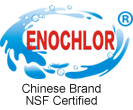29
2025
-
07
Exploring the Versatility of China SDIC 56 in Organic Chemical Production
Exploring the Versatility of China SDIC 56 in Organic Chemical Production Table of Contents 1. Introduction to SDIC 56 and Its Importance in Organic Chemistry 2. Chemical Properties of SDIC 56 3. Diverse Applications of SDIC 56 in Organic Chemical Production 3.1 Role in Agriculture: Enhancing Crop Yields 3.2 Pharmaceutical Applications: A Key Ingredien
Exploring the Versatility of China SDIC 56 in Organic Chemical Production
Table of Contents
- 1. Introduction to SDIC 56 and Its Importance in Organic Chemistry
- 2. Chemical Properties of SDIC 56
- 3. Diverse Applications of SDIC 56 in Organic Chemical Production
- 3.1 Role in Agriculture: Enhancing Crop Yields
- 3.2 Pharmaceutical Applications: A Key Ingredient
- 3.3 Use in Textile Manufacturing: Improving Quality
- 4. Sustainability and Environmental Impact of SDIC 56
- 5. Production Process for SDIC 56: A Closer Look
- 6. Regulatory Aspects and Safety Considerations
- 7. Future Trends in Organic Chemical Production with SDIC 56
- 8. Conclusion: The Future of SDIC 56 in Organic Chemistry
- 9. Frequently Asked Questions about SDIC 56
1. Introduction to SDIC 56 and Its Importance in Organic Chemistry
SDIC 56, or Sodium Dichloroisocyanurate, is a **versatile compound** widely utilized in the organic chemicals industry. Its unique properties make it an essential ingredient in various applications, ranging from agriculture to pharmaceuticals. Understanding the multifaceted roles of SDIC 56 can help industries streamline their processes and improve product quality while adhering to environmental regulations.
In recent years, there has been a growing emphasis on sustainable and efficient chemical production methods. Companies are increasingly turning to SDIC 56 as a solution for meeting these demands. This article aims to explore the **versatility of SDIC 56** in organic chemical production, highlighting its applications, chemical properties, impact on sustainability, and future trends.
2. Chemical Properties of SDIC 56
SDIC 56 possesses several key chemical properties that make it invaluable in various applications.
2.1 Chemical Composition
The chemical formula of SDIC 56 is C3Cl2N3NaO3. It contains three primary elements: chlorine, nitrogen, and sodium, along with oxygen.
2.2 Solubility and Stability
SDIC 56 is highly soluble in water, which enhances its effectiveness in numerous applications. Furthermore, it retains stability under various conditions, making it a reliable choice for long-term use in chemical formulations.
2.3 Oxidizing Agent
As an oxidizing agent, SDIC 56 plays a crucial role in various organic reactions. Its ability to release chlorine makes it effective in disinfecting and sanitizing processes, further underscoring its versatility.
3. Diverse Applications of SDIC 56 in Organic Chemical Production
SDIC 56 finds extensive use across multiple sectors due to its unique properties. Below, we delve into some of the most significant applications in organic chemical production.
3.1 Role in Agriculture: Enhancing Crop Yields
In the agricultural sector, SDIC 56 is a potent tool for enhancing crop yields. It acts as an effective **disinfectant**, helping to control pathogens that can disrupt plant growth. Its deployment in irrigation systems ensures water remains free of harmful microorganisms, promoting healthier crop development.
Moreover, SDIC 56 is utilized in formulating fertilizers, where its chlorine content aids in nutrient absorption. This improves plant resilience, leading to increased productivity and higher quality produce.
3.2 Pharmaceutical Applications: A Key Ingredient
The pharmaceutical industry also benefits significantly from SDIC 56. Its properties as a **sanitizer** and disinfectant are crucial in the manufacturing of sterile products. By maintaining cleanliness throughout the production process, SDIC 56 helps mitigate contamination risks, ensuring the safety and efficacy of pharmaceutical products.
Additionally, it is employed in the synthesis of various organic compounds, contributing to the development of new drugs and therapies. Its versatility makes it an essential component in the pharmaceutical manufacturing landscape.
3.3 Use in Textile Manufacturing: Improving Quality
In textile manufacturing, SDIC 56 serves as a bleaching and sanitizing agent. Its effective stain removal properties enhance the **visual appeal** of fabrics, ensuring high-quality finishes. By incorporating SDIC 56 into textile processing, manufacturers can achieve brighter colors and cleaner fabrics, which is essential in a competitive market.
Moreover, its use in water treatment processes during textile production further highlights its versatility, as it ensures that the water used is free from contaminants, thus protecting both the environment and the quality of the final product.
4. Sustainability and Environmental Impact of SDIC 56
The global push for sustainability has prompted many industries to reevaluate their practices. SDIC 56 stands out for its environmentally friendly profile.
4.1 Biodegradability
One of the key benefits of SDIC 56 is its biodegradable nature. Unlike many chemical compounds that persist in the environment, SDIC 56 breaks down into harmless byproducts, minimizing its ecological footprint.
4.2 Reduced Chemical Waste
Incorporating SDIC 56 into production processes can lead to reduced chemical waste. Its effectiveness means that lower quantities are needed to achieve desired results, promoting more sustainable practices in organic chemical production.
4.3 Compliance with Regulations
With stringent environmental regulations in place, using SDIC 56 can aid companies in maintaining compliance. Its safe handling and reduced toxicity profile make it an appealing option for businesses looking to adhere to the latest environmental standards.
5. Production Process for SDIC 56: A Closer Look
Understanding how SDIC 56 is produced is crucial for appreciating its role in organic chemical production.
5.1 Raw Materials
The production of SDIC 56 begins with the **reaction of cyanuric acid** with sodium hypochlorite. This chemical reaction yields the desired product, which is then purified for commercial use.
5.2 Quality Control
Ensuring quality throughout the production process is essential. Manufacturers implement rigorous quality control measures to guarantee that SDIC 56 meets industry standards and specifications.
5.3 Distribution and Storage
Once produced, SDIC 56 is distributed to various industries. Proper storage conditions are vital to maintaining its stability and effectiveness. It should be kept in a cool, dry place, away from sunlight and moisture to ensure longevity.
6. Regulatory Aspects and Safety Considerations
The use of SDIC 56 in various applications necessitates adherence to regulatory guidelines to ensure safety and efficacy.
6.1 FDA and EPA Regulations
In the United States, the Food and Drug Administration (FDA) and the Environmental Protection Agency (EPA) regulate the use of SDIC 56, particularly in agricultural and pharmaceutical contexts. Companies must comply with these guidelines to ensure safe usage.
6.2 Safety Data Sheets (SDS)
Manufacturers must provide **Safety Data Sheets** (SDS) outlining handling, storage, and emergency measures associated with SDIC 56. This information is crucial for workers and companies using the compound in their processes.
6.3 Employee Training
Training employees on the safe handling and potential hazards of SDIC 56 is essential. Companies must foster a culture of safety to minimize risks associated with chemical use.
7. Future Trends in Organic Chemical Production with SDIC 56
As industries evolve, the role of SDIC 56 in organic chemical production is likely to grow.
7.1 Innovations in Applications
Advancements in technology and research may uncover new applications for SDIC 56. The search for sustainable alternatives will drive innovation, leading to more efficient production methods.
7.2 Increased Demand for Sustainable Solutions
As environmental consciousness rises, the demand for sustainable solutions will continue to shape the industry. SDIC 56's eco-friendly profile positions it well for future growth in organic chemical production.
8. Conclusion: The Future of SDIC 56 in Organic Chemistry
In summary, SDIC 56 stands as a versatile and valuable compound in organic chemical production. Its unique properties, wide-ranging applications, and positive environmental impact make it a preferred choice across various industries. As the demand for sustainable solutions continues to grow, the potential for SDIC 56 will only expand, solidifying its role in the future of organic chemistry.
9. Frequently Asked Questions about SDIC 56
What is SDIC 56 used for?
SDIC 56 is used in agriculture, pharmaceuticals, textiles, and water treatment due to its disinfectant and bleaching properties.
Is SDIC 56 safe to use?
When handled according to safety guidelines and regulations, SDIC 56 is considered safe for use in various applications.
How does SDIC 56 impact the environment?
SDIC 56 is biodegradable and reduces chemical waste, making it an environmentally friendly option for many industries.
What regulations apply to SDIC 56?
SDIC 56 is regulated by the FDA and EPA in the United States, particularly concerning its use in food and agricultural applications.
What are the future trends for SDIC 56?
Future trends for SDIC 56 include increased demand for sustainable solutions and innovations in its applications within organic chemical production.
Previous
Previous
2023-04-23







